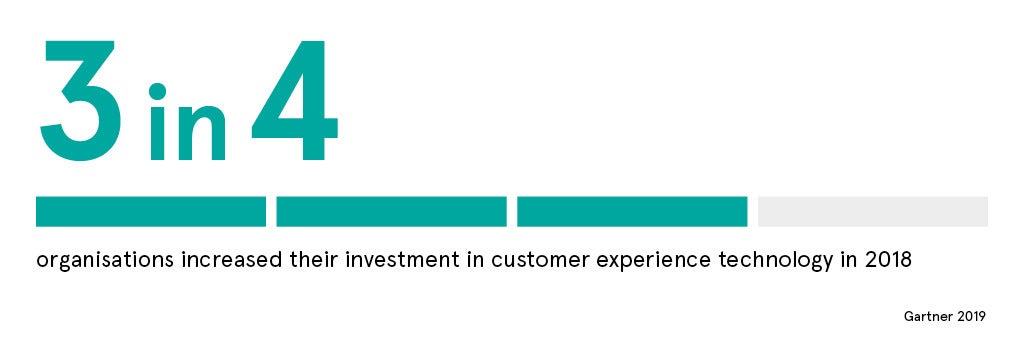
When foreign exchange operator Travelex was held hostage by cyber attackers on New Year’s Eve, its employees were forced to serve customers with pen and paper. It took over a month to get back to business as usual and customer data was stolen. Angry customers – and partners – took no time in sharing their frustrations on social media.
To avoid a Travelex-style meltdown and keep customers happy, companies need to first understand how programme data flows at the back-end systems.
Client-centric benefits
In today’s world of high customer expectations and instant gratification, client-centric companies are an incredible 60 per cent more profitable than those that are not, according to a study by Deloitte. The consulting firm identifies client-centricity as the most important factor in a successful business digitalisation.
Three quarters of organisations increased their investment in customer experience (or “CX”) technology in 2018, found advisory firm Gartner. When an unhappy customer can tweet their frustrations for the world to see, CX matters more.

“Suddenly, consumer app expectations and this instant gratification environment is applying to even businesses that have traditionally been allowed to call the shots, like banks, insurers and wealth managers,” says Jason Crabtree, co-founder of unified enterprise analytics-as-a-service platform QOMPLX.
Technology has changed customer experiences and customer expectations, Mr Crabtree argues. “People aren’t going to tolerate the same kind of poor user experiences. They are now saying, ‘why isn’t this as enjoyable as my social media account?’ People are realising this dimension of [companies] being confident to deliver a quality experience, even if the organisation is under duress.”
Figure out the flow
First, understand the critical processes that deliver value to the customer. The Travelex attack didn’t just hurt its direct customers, like holidaymakers at the airport. It also affected the company’s whole supply chain, from Wall Street and High Street banks to supermarkets that relied on Travelex to offer currency services to their customers. Global firms like Barclays, RBS and Tesco were some of the brands dragged down by Travelex’s mess.
As digital supply chains grow and become more complex, organisations need to pay close attention to these kinds of third-party risks. “I think you have to start with the client value and work your way back,” says Mr Crabtree. He says that a lot of organisations opt to start a risk programme when they should really be determining “the things that would make us have a bad day and not deliver value for the client”, before working from there. This allows them to identify the dependencies, he says, finding what must be true to ensure the disruption does not occur.
Once businesses have figured out these dependencies, they can start to examine their ecosystem, such as the types of controls that are in place to ensure their delivery system is effective. The next step is to identify which hazards could threaten those controls, such as a ransomware event or data breach.

Drill into the data
Start by compiling a comprehensive inventory of all data assets and analyse if they are being used in a targeted way. The best thing companies can do is go back to their value statement and determine the particular subset of data they rely on in the areas where they deliver the most value to their clients, Mr Crabtree notes.
Businesses can struggle to determine if they are collecting enough data and how well it is categorised. A common problem that Mr Crabtree sees is that companies compile data from customers at different stages of their purchasing journey, but it is split across multiple silos within the organisation. This means that many companies have ample customer data – and are paying to store it – but are not making the best use of it.
“A platform like QOMPLX’s allows you to integrate several different data sources with consistent versioning, permissioning, and data access control so that you can actually do cross-silo analytics or even answer basic questions [that deliver] business intelligence with transparent provenance.”
In digital transformation, it’s crucial to ensure your plan doesn’t rely on serendipity to deliver business value, Mr Crabtree says. Companies should “have enough discipline that you have a comprehensive inventory of all data assets and transformation process steps the whole time”.
Having the right people with access to the right data to explore adjacent uses drives revenues and delivers a better CX, Mr Crabtree says. Serendipity is merely the accelerant.
“If you do it the other way around, you’re never going to make the progress you need.”

When foreign exchange operator Travelex was held hostage by cyber attackers on New Year’s Eve, its employees were forced to serve customers with pen and paper. It took over a month to get back to business as usual and customer data was stolen. Angry customers – and partners – took no time in sharing their frustrations on social media.
